
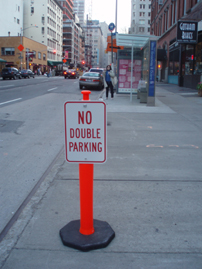
Restaurant Bouley (left); In case you were wondering… (right)
David Bouley, chef/owner of three successful TriBeCa restaurants, is throwing his whole restaurant empire into a state of turmoil.
The flagship, Bouley, will be moving into new quarters in the old Mohawk building, a block away. His bakery, now located across the street, will move into the old restaurant space. That will create room for the restaurant Upstairs to expand into all three floors of that building. (I wonder if they’ll still call it “Upstairs”?)
Bouley’s Austrian-themed restaurant, Danube, will close, to be replaced by Secession, a French brasserie. Lastly, he’ll be creating a three-story Japanese restaurant, Brushstroke, in the space formerly occupied by Delphi, which had been the oldest restaurant in TriBeCa. The place closed last year after it couldn’t agree to a new lease with its landlord.
These changes are supposed to happen in the course of this year. Mind you, all of these restaurants, existing and to be, are literally within one block of the current Bouley space. If David Bouley is a control freak, he won’t have to go far to check up on any of his projects.
So how is the state of the Bouley union? Let’s begin with the flagship, Bouley. I was able to get a nice wide-angle shot (above), because there are no cars outside. This is one of the Community Board’s major complaints about the place. Notice the sign outside, “No Double Parking.” At the moment, there’s no single parking there either.

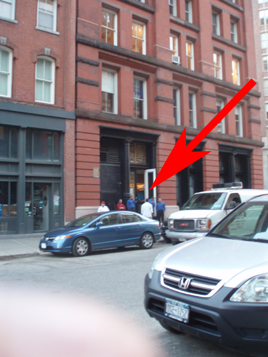
Restaurant Upstairs (left); At Danube, “Do you think someone’s going to blog about us?” (right)
Business is brisk at Upstairs (above left). This was the first night of the year that the outdoor tables were in use. Over at Danube (above right), a gaggle of employees loitered outside.
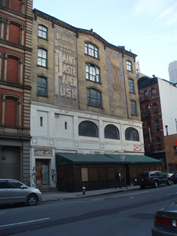
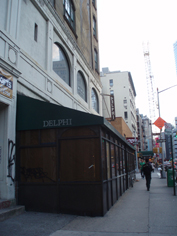
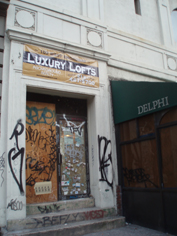
The old Delphi space will house the new restaurant Brushstroke, and apparently, Luxury Lofts up above
The space that will be Brushstrokes still looks like the vacant hulk that was Delphi. It isn’t a very appealing sight. Note the sign for “Luxury Lofts” next door. Doesn’t look very luxurious, does it?
This restaurant has not had an easy gestation. In February, a committee of Community Board 1 twice voted to deny Brushstroke a liquor license, based on years of complaints about the way Bouley runs his restaurants. Bouley put on a charm offensive with the full Community Board, and miraculously, they voted in favor of recommending a liquor license. (They almost never override the committee vote.)
Here it gets creepy. The very next day, the Buildings Department issued a Stop Work Order at the Delphi site “after finding that a floor joist had been removed without providing shoring.” That seems almost too coincidental. Could it be that someone in the area who had opposed the liquor license filed an anonymous tip?
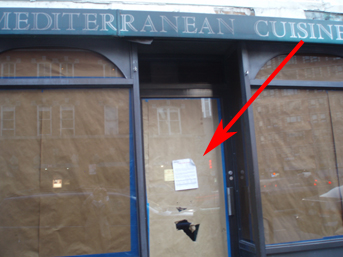

There’s no work being done here, after the Dept. of Buildings found unsafe conditions
It looks like this restaurant still has a long way to go. I don’t think we’ll see Brushstroke before 2009.
 Wednesday, October 28, 2009 at 08:21AM
Wednesday, October 28, 2009 at 08:21AM  Danny Meyer,
Danny Meyer,  Floyd Cardoz,
Floyd Cardoz,  Tabla in
Tabla in  Restaurant Industry
Restaurant Industry 














